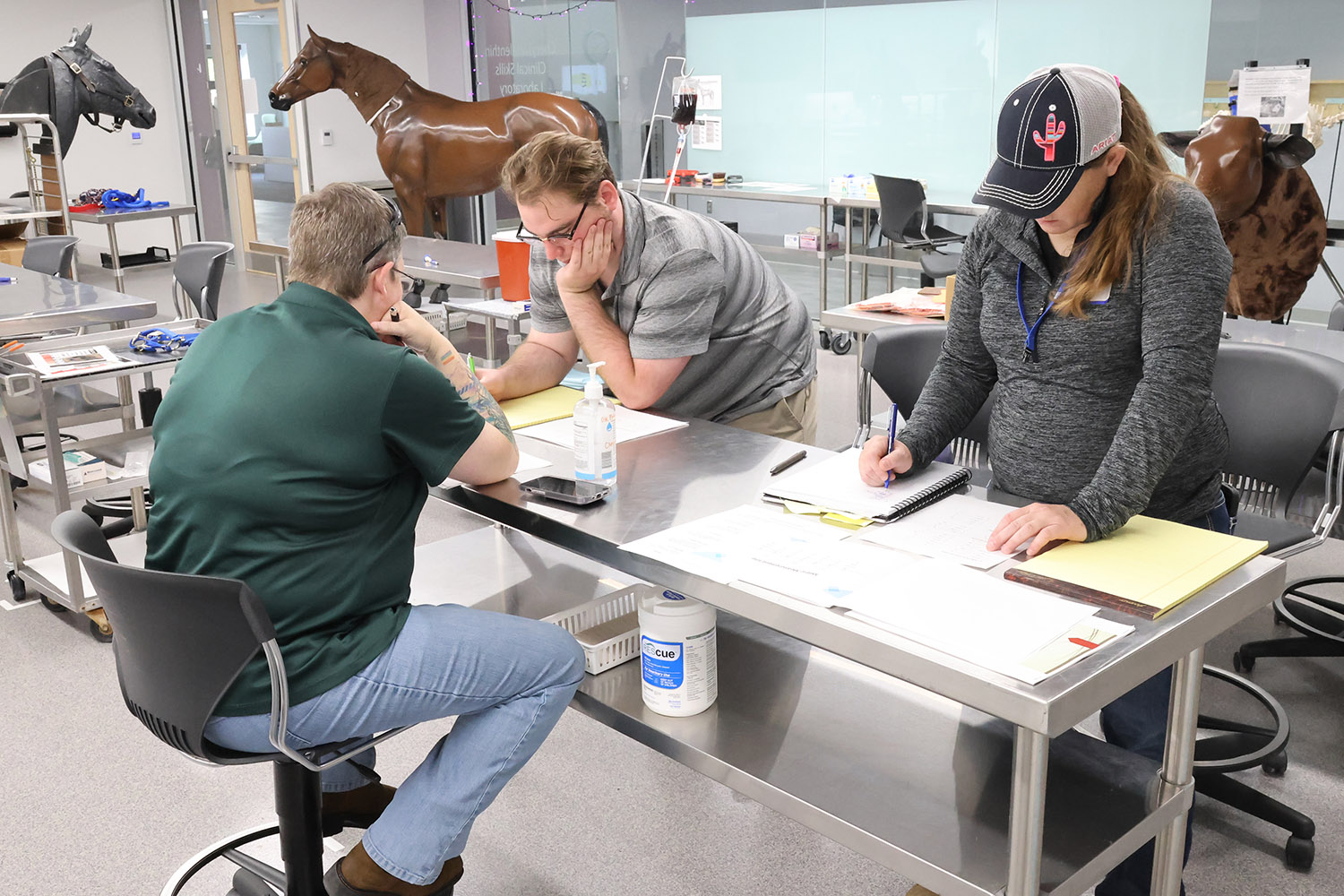K-State veterinary college offers clinical skills laboratory to NBAF animal care team
Tuesday, Aug. 1, 2023

NBAF animal care technicians work on medical math formulas in the clinical skills laboratory at the College of Veterinary Medicine. The college makes training space available in the summer months as one way to enhance collaboration opportunities between NBAF and Kansas State University. | Download this photo.
MANHATTAN — While students are on summer break, the Kansas State University College of Veterinary Medicine is providing a special training opportunity for scientists and support staff from the U.S. Department of Agriculture's nearby National Bio and Agro-Defense Facility, or NBAF.
The college has offered a group of 10 NBAF animal care technicians and veterinary scientists access to its clinical skills laboratory for a summer training session. The training is led by Shane Lyon, clinical associate professor and clinical skills coordinator, and Susan Rose, clinical education technician. Rose has employed her art skills to design many of the animal models used in the lab.
"This training lab provides advanced continuing educational opportunities and a variety of animal model simulators for NBAF's high-caliber animal care staff and scientists," said Katie Knapek, NBAF supervisory veterinary medical officer. "When we initially started this training partnership, we were teleworking through the pandemic. Coming together to work in this lab as a group helps us build relationships and keep skills sharp."
NBAF's animal care team has helped create and expand some of the animal models that are in the college's lab.
"The College of Veterinary Medicine is fortunate to have remarkable facilities; among the facilities for training, the clinical skills laboratory is a center of excellence for practical animal care skill building," said Elizabeth Davis, associate dean of clinical programs. "It is a privilege to have the opportunity to partner with NBAF for animal staff training. We have partnered for the past few summers and are thrilled to have this opportunity again in 2023."
Some of the basic skills NBAF staff work on include medical math, needle handling, suturing skills, blood draws and general safety around animals. The inanimate animal models have realistic veins and fluids, which allow animal care professionals to practice techniques and find methods to reduce animal stress.
"Continual education and training is a critical part of NBAF's effort to become a high-reliability organization and implement excellence into our organizational culture," said Alex Jane Grey, NBAF training specialist. "We don't have animals at NBAF yet, and some of our technicians have been on staff since 2020. So, the goal is to expand our team's knowledge and give them hands-on opportunities to try different techniques before live animals arrive."
As part of the program, Lyon provides an activity-based lecture that guides the team in making full use of their senses when making observations about working with animals. Rose provides assistance on several different procedures involving the use of the animal models.
According to Lyon, thorough observation is emphasized as part of the fundamental principles of working with animals. In one of the guided labs, participants can refine their observation skills through the use of sight, sound, touch and smell.
"The objective is to help participants progress beyond mere perception and develop the ability to analyze and interpret their observations," Lyon said. "This enables them to derive more meaningful insights and effectively apply this experience to real-world situations when working with animals."
Grey said this is the first year NBAF has included the scientific staff in the training as opposed to just the unit that will provide animal care.
"A lot of times the scientists are with us when we're collecting samples, so it's helpful for them to understand how it's done, even if it’s just understanding where to stand and where not to stand," Grey said. "The more familiar everyone is with these concepts, the safer it is for everyone involved, including the animals, and that's our goal."
